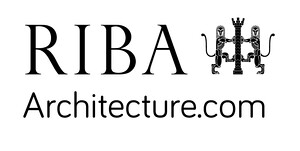Conservatism, or The Long Reign of Pseudo Georgian Architecture
September 21, 2017–February 11, 2018
66 Portland Place
London W1B 1AD
United Kingdom
Pablo Bronstein: Conservatism, or The Long Reign of Pseudo-Georgian Architecture anchors around the work of internationally renowned artist Pablo Bronstein, and his exploration of “ubiquitous” neo-Georgian developments as an exemplar of British vernacular.
Pablo Bronstein has created 50 new drawings of buildings constructed during the second half of the 20th century in an ostensibly neo-Georgian style. These drawings are framed and displayed alongside rarely-seen historical Georgian and neo-Georgian material. Chosen by the artist from the RIBA’s collections, these archival works situate Bronstein’s drawings in the context of architectural practice through time. Pablo Bronstein has collaborated with architecture practice Apparata (Nicholas Lobo Brennan and Astrid Smitham) to transform the RIBA’s gallery space into a domestic environment in which the objects are arranged across seven rooms.
The title of the exhibition—playing on the highly extended titles of eighteenth and nineteenth century social comedies and theatrical productions—contains the term “Pseudo-Georgian,” a neologism coined by the artist. The term describes a specific aesthetic commonly seen in recent British construction; a particular skein of developer-led, mass-produced construction which begins after the post-war enthusiasm for Modernist construction fades. The mid-1970s saw a rise in heritage concerns, restoration and preservation as well as a renewed enthusiasm for historic styles in the rebuilding of Britain, and particularly London.
In this context, the term Conservatism refers not to specific political interest, but rather to a tendency towards nostalgia, security and a historically inflected sense of national identity. Originally, architecture in the Georgian era—itself a period of great national confidence—developed a refined interpretation of Neo-Classicism, stripped back and presented as an approved declension of “good taste.” Subsequently, the popular style proliferated through architects and builders at all social levels. The various waves of Neo-Georgian architecture were motivated by similar intentions, to restore a sense of authority and historic continuity to Britain’s architectural fabric. The current exhibition examines the most recent wave of this tendency, examining what it means to be building in an ostensibly Georgian aesthetic today.
To coincide with Bronstein’s show, RIBA has commissioned an installation for the foyer of its flagship building at 66 Portland Place, designed by APPARATA (Nicholas Lobo Brennan & Astrid Smitham). The installation, titled Abacus, Base, Capital, comprises a sculptural totem and augmented by furniture elements, arises from the practice’s belief that classical architecture is deployed as a progressive force, associated with leaps in human knowledge. A twenty-first century classicism, the architects claim, includes contradiction, tension and motion.
Pablo Bronstein: Conservatism, or The Long Reign of Pseudo-Georgian Architecture is supported by Herald St London and Galleria Franco Noero. Abacus, Base, Capital by APPARATA is supported by Arts Council England.


